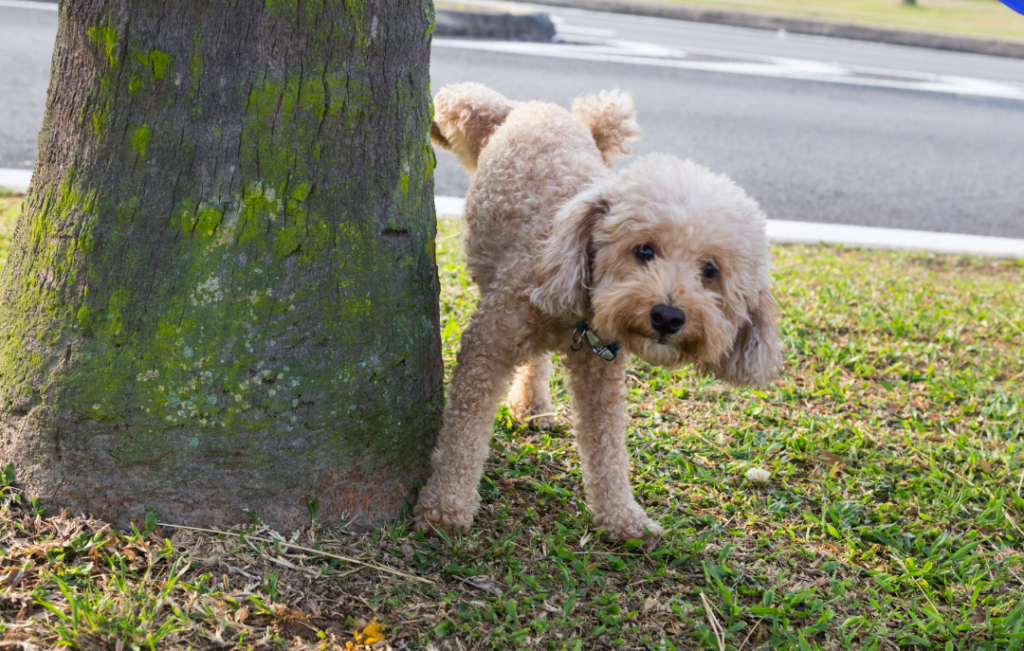My Dog Doesn't Let Me Know When He Has To Pee
Welcome, fellow dog enthusiasts! Today, we’re diving into a tail-waggingly intriguing topic: understanding why our furry friends sometimes don’t let us know when it’s time to go outside for a pee break. As a seasoned dog trainer and blogger at CRT K9, I’ve seen my share of silent doggies and perplexed owners. So, grab your leash, and let’s unravel this mystery together!
If you’re a dog owner, you know that our canine companions have their unique ways of communicating. But what happens when they don’t bark, whine, or give any sign that they need to go outside for a bathroom break? It’s a common and sometimes frustrating issue for many pet parents. But fear not! We’re here to explore why this happens and how to address it.

Understanding Your Dog's Communication
First things first, let’s talk about how dogs communicate. Dogs don’t speak our language (shocking, I know), but they have a myriad of ways to express their needs and emotions. Tail wags, ear positions, body posture, and yes, even barking or whining, are all part of their communication toolkit. But what happens when these signals are missing?
Common Misconceptions:
- Myth: All dogs naturally tell you when they need to go out.
- Reality: Not all dogs will vocalize or show obvious signs when they need a bathroom break.
Reasons Why Dogs Don't Signal Their Need to Pee
Understanding why your dog isn’t signaling when it’s time to hit the lawn for a bathroom break can be puzzling. Let’s dig deeper into the possible reasons behind this silent behavior.
1. Lack of Training
- The Early Days: Many dogs aren’t taught to signal as puppies. Without early training, they simply don’t know how to communicate their need to go outside.
- Consistency is Key: Training requires consistency. If a dog receives mixed messages about where and when to pee, it might not learn to signal effectively.
- Positive Reinforcement: Dogs respond well to positive reinforcement. If they are not rewarded for signaling in the past, they may not see the point in doing it.
2. Breed and Temperament
- Breed Differences: Some breeds are naturally more communicative than others. For instance, a Beagle might be more vocal, while a Greyhound might be more reserved.
- Individual Personality: Just like humans, every dog has its personality. A more introverted or timid dog might be less inclined to signal.
- Understanding Your Dog’s Nature: It’s important to understand your dog’s breed tendencies and individual personality to tailor your training and expectations.
3. Age-Related Factors
- Puppy Challenges: Puppies have developing bladders and might not signal simply because they’re still learning bladder control.
- Senior Dog Struggles: Older dogs might face age-related challenges like cognitive decline or incontinence, affecting their ability to signal.
4. Health Issues
- Medical Reasons: Certain health issues like urinary tract infections, diabetes, or kidney disease can affect a dog’s ability to hold it in or signal in time.
- Physical Limitations: Dogs with physical limitations, such as arthritis, might find it difficult to get to the door to signal.
- Regular Check-Ups: Regular veterinary check-ups are crucial to rule out any underlying health issues.
5. Environmental Factors
- Negative Experiences: If a dog has been scolded for signaling in the past or had negative experiences when attempting to go outside, it may stop signaling.
- Change in Environment: Moving to a new home, changes in the family dynamic, or even a new pet can disrupt a dog’s routine and affect its signaling behavior.
- Consistent Environment: Providing a stable, safe, and consistent environment is essential for your dog to feel comfortable signaling.
6. Lack of Opportunity
- Missed Signals: Sometimes, the issue is not with the dog but with the owner missing subtle signals.
- Busy Schedules: In our busy lives, we might not always be around or attentive enough to notice when our dog needs to go.
- Creating Opportunities: Ensure your dog has ample opportunities to go outside, especially after meals, first thing in the morning, and last thing at night.
7. Relationship Dynamics
- Trust and Bonding: A dog’s relationship with its owner plays a significant role. If a dog doesn’t feel a strong bond or trust, it may not communicate its needs effectively.
- Building a Strong Bond: Spend quality time with your dog, engage in training, play, and provide affection to strengthen your bond.
Training Your Dog to Communicate Bathroom Needs
Training your dog to communicate when it needs to go outside is not just convenient, it’s a crucial aspect of a harmonious pet-owner relationship. Let’s pawse and explore some effective strategies to help your dog express its bathroom needs more clearly.
1. Basic Training Strategies
- Start with a Cue: Choose a specific word or phrase like “potty time” every time you take your dog out. This repetition creates a mental association for your dog.
- Routine is Golden: Dogs thrive on routine. Set specific times for bathroom breaks, ideally after meals, first thing in the morning, and before bedtime.
- Leash Training: Put your dog on a leash when you take it out for a bathroom break, even if you have a fenced yard. This reinforces that it’s potty time, not playtime.

2. Positive Reinforcement Techniques
- Treats and Praise: Immediately reward your dog with a treat and enthusiastic praise when it goes to the bathroom outside.
- Be Prompt with Rewards: Timing is crucial. Reward your dog as soon as it finishes its business to reinforce the connection between the action and the reward.
- Avoid Punishment: Never punish your dog for accidents inside. This can lead to anxiety and worsen the problem.
3. Addressing Specific Challenges
- Customize Training: Adapt training methods based on your dog’s breed, age, and personality. Some dogs might need more patience and gentle encouragement.
- Consistency Across Caregivers: Ensure everyone in your household follows the same training and routine to avoid confusing the dog.
4. Using Bell Training
- Introducing the Bell: Hang a bell by the door and teach your dog to ring it with its nose or paw before going out.
- Incorporate into Routine: Every time you go out for a potty break, guide your dog to ring the bell first.
- Positive Reinforcement: Reward your dog after it rings the bell and again after it goes to the bathroom.
5. Managing Accidents
- Clean Up Properly: Use an enzymatic cleaner to remove odors that might encourage your dog to go in the same spot again.
- Supervision and Confinement: Supervise your dog as much as possible and consider confining it to a small area when you’re not home to prevent accidents.
6. Gradual Expansion of Freedom
- Increase Freedom Gradually: As your dog becomes more reliable, gradually give it more freedom in the house.
- Monitor Progress: Keep an eye on your dog’s behavior and regression, and adjust the level of freedom accordingly.
7. Consulting with Professionals
- Seek Expert Advice: If you’re facing challenges, consult a professional dog trainer. They can offer personalized advice and techniques based on your dog’s specific needs.
- Behavioral Assessment: In some cases, a dog’s inability to communicate its needs might stem from deeper behavioral issues. A professional can help identify and address these.
Preventive Measures and Solutions
Creating a Routine: Dogs thrive on routine. Establish a regular schedule for meals and bathroom breaks.
Recognizing Subtle Signs: Some dogs may show less obvious signals, like standing near the door, looking at you intently, or pacing. Be observant!
Consulting with Professionals: If you’re struggling, don’t hesitate to consult a vet or professional dog trainer. Sometimes, an expert eye can spot issues we might miss.
Conclusion
Understanding why your dog doesn’t let you know when it needs to pee requires patience, observation, and sometimes a bit of detective work. Remember, each dog is unique, and what works for one might not work for another. Stay consistent, be patient, and above all, keep the communication with your furry friend positive and loving.
Happy training, and here’s to many successful potty breaks ahead!
